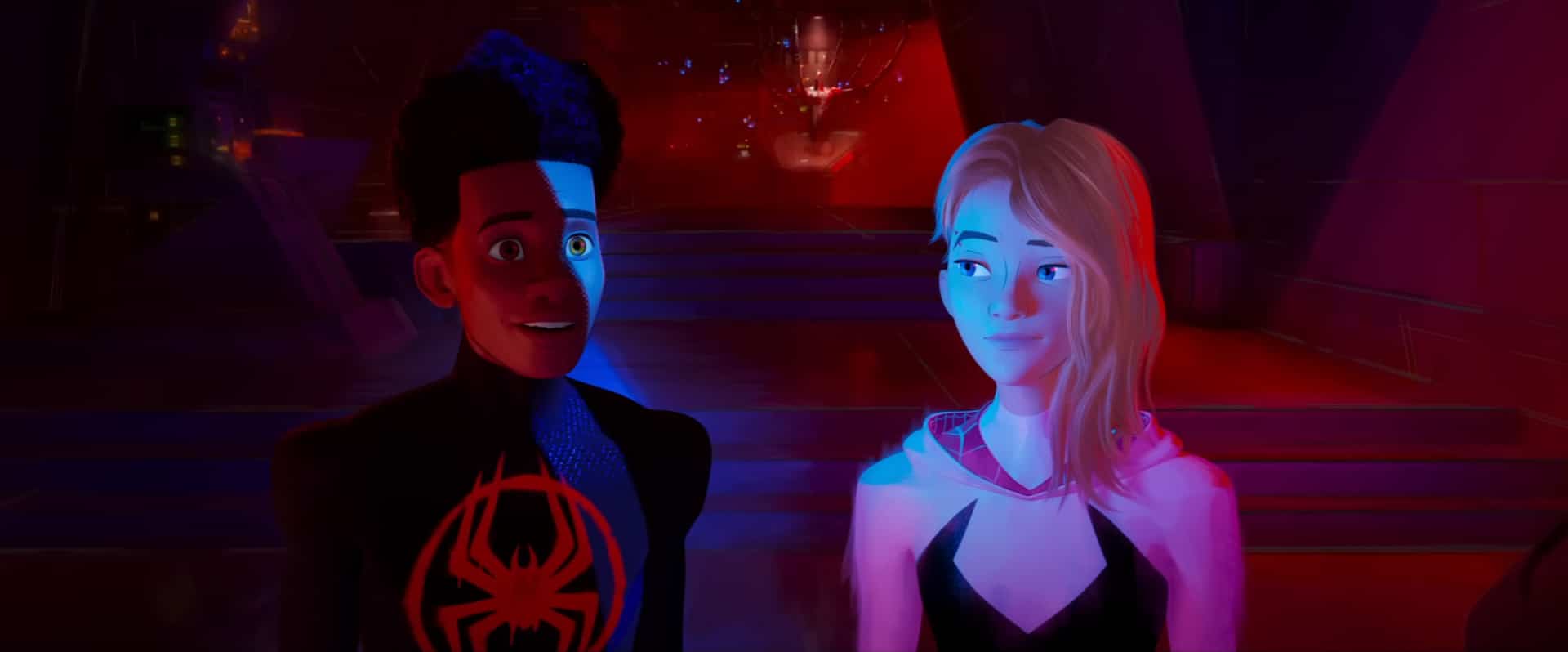
We Catholics know that each person’s life is unique, unrepeatable and formed from joys, pain, suffering, tragedy, grace and wonder—all of which are meaningful.
The current slate of “multiverse” films—inside and out of the superhero genre—often seems to give the opposite impression.
Rather than encouraging audiences to embrace the joys and sorrows of the lives we actually live, we get plots that hinge on do-overs, rewinds, alternative timelines and even alternative selves.
Those who watched Miles Morales’ climb onto the big screen in Spiderman: Into the Spider-Verse (2018) knew that the Sony-Marvel animation was something special, in part because it gave us a “multiverse” story that bucked these themes and put character with a big heart at the centre of its cosmic chaos.
The sequel, Spiderman: Across the Spider-Verse, delivers everything that made the first film magical, but with more intensity.
That includes its box-office takings: In two weeks Across the Spider-Verse has already surpassed the entire box office run of its predecessor, grossing more than $412.5 million dollars worldwide.
Across the Spider-Verse starts with punk rock drummer Gwen Stacy (voiced by Hailee Steinfeld), aka Spider-Woman, who suffered a tragedy involving her best friend Peter Parker and her police officer dad.
Finding herself fighting alongside Miguel O’Hara/Spider-Man 2099 (voiced by Oscar Isaac), a Spiderman from an alternate universe, she joins his elite squad of Spider-People who help protect the multiverse, or spider-verse, from dangerous threats and anomalies.
One of Gwen’s assignments leads her back to the Earth of Miles Morales (voiced by Shameik Moore) where, one year after the events of the first film, the teenager is currently balancing his responsibilities as a student, son and Spider-Man.
Unfortunately, Miles’ grasp on his home and school life begins to slip under the pressure of protecting Brooklyn from its villains, like the Spot (voiced by Jason Schwartzman), who seeks to be Miles’ greatest nemesis.
Both Gwen and Miles finally meet but the two heroes’ long-awaited reunion gets cut short when a mutual enemy finds a way to travel through the spider-verse, threatening other worlds and drawing the attention of the entire spider-society.
Attempting to put things right, Miles unintentionally triggers a catastrophic event that seeks to unravel both the spider-verse and the secrets to his power and purpose.
Spiderman: Across the Spider-Verse is a visual masterpiece, woven together by its breathtaking art, awe-inspiring animation and deeply engrossing storytelling.
It builds upon the successes of its predecessor, using Miles’ trials and triumphs, as human and hero, to unpack his journey through adolescence.
This isn’t a stand-alone sequel, following the same tricks and tropes as other films in the franchise, but it’s a continuation of Miles’ story and an in-depth dive into what defines Spider-Man.
Producers Phil Lord and Christopher Miller, who co-wrote the script with David Callaham, have created a story that is as engaging as it is insightful and enriches the established themes of belonging, fate and purpose from Into the Spider-Verse.
It skilfully intertwines them with the film’s exploration of heroism and the role that tragedy plays in its fulfilment.
It’s an ambitious undertaking for a PG-rated film, that is nevertheless brought off through meaningful exposition and an array of fully developed characters, particularly Gwen and Miguel, whose own histories and hang-ups help flesh out the film without overcomplicating it.

Nevertheless, the runtime could easily have been cut down by 30 minutes if the exploration of Miles’ family dynamics was pared back.
Across The Spider-Verse is beautifully animated, with every sequence bursting with colour and creativity; so much thought and detail has been poured into the visuals that each frame is a masterpiece.
For continuity, the film embraces the comic style that defined Into the Spider-Verse but adopts a number of other art forms and sound that breathes life into the story, evoking emotion and engagement.
The cast all give standout performances, which brings weight to the flawless animation and the writing.
With a larger and more intimate role here than in the first, Steinfeld gives Gwen her all and showcases some of the best voice acting so far in the series.
Her chemistry with Moore’s Miles lift both performances and the two steal the show whenever their characters are together on screen.
Isaac voices the stoic Miguel perfectly, giving him a darkness and brokenness that compliments the rest of the cast, and conveying through emotion what would otherwise require lengthy, unsubtle exposition.
Across The Spider-verse is an artistic achievement from Sony and Marvel; the attention given to the smallest of details, the care and creativity of the writers and artists, and the various Easter eggs, in-jokes, and references to Spider-Man’s legacy has ensured that this film will be re-watched for many more years.
Rated PG for mild science fiction themes, animated violence and coarse language, Spiderman: Across The Spider-verse is currently showing in cinemas across the country.
